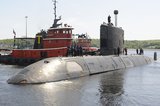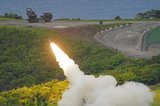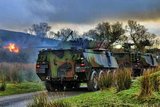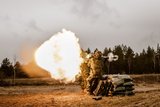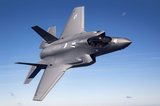Taliban vows 'serious revenge' over Afghan airstrike
The Taliban has vowed to ‘take serious revenge’ after an Afghan airstrike in an area controlled by the militant group killed or wounded dozens of people, many of them children.
The government and military have said the Afghan Air Force (AAF) hit a Taliban base in the northeastern province of Kunduz on 2 April where senior commanders were meeting to plan attacks.
But Afghan security sources and witnesses have told AFP that AAF helicopters struck a madrassa in Dashte Archi district where a graduation ceremony for religious students was under way.
At least 59 people were killed, including Taliban commanders, according to security sources. Health officials said at least 57 wounded were taken to hospital in the provincial capital Kunduz.
The Taliban issued a statement late on 4 April saying it ‘condemns in the strongest terms this major crime and vows to take serious revenge against the perpetrators’.
An AFP photographer was among the first journalists to visit the scene of the airstrike on 4 April after receiving permission from the Taliban. It is deep inside Taliban-controlled territory and normally inaccessible to the media.
The madrassa and mosque appeared to be undamaged. But in a field adjacent to the religious compound, where the graduation ceremony was purportedly held, AFP saw a hole in the ground that locals said was made by a rocket, though that could not be verified.
AFP also saw large piles of hats, turbans and shoes that were said to belong to the victims of the airstrike. At least half a dozen freshly dug graves could be seen nearby.
Abdullah, 40, who lives near the compound housing the madrassa and mosque and was invited to attend as a member of the local community, told AFP that he saw the airstrike happen.
Abdullah said: ‘We were about to finish the ceremony at 1:00 pm when (Afghan military) aircraft bombarded innocent children.
‘People were panicked. Children and elders were also wounded in the bombardment.’
Government officials in both Kabul and Kunduz have given conflicting figures for the number of casualties, with some denying any civilians had been killed or that a madrassa had been hit.
Afghan officials have been known to minimise civilian casualties.
The Afghan military initially denied civilians were among the dead and wounded, but later blamed the Taliban for shooting them.
It said 18 Taliban commanders were killed and 12 were wounded in the airstrike. But Naim Mangal, a doctor at the hospital where most of the wounded were taken, told AFP that ‘all the victims’ had been ‘hit by pieces of bomb, shrapnel’.
More from Defence Notes
-
![How might European countries look to tackle drone incursions?]()
How might European countries look to tackle drone incursions?
Disruption of infrastructure in Europe, whether by cyberattack, physical damage to pipelines or uncrewed aerial vehicles flying over major airports, as has happened more recently, is on the rise. What is the most effective way of countering the aerial aspect of this not-so-open warfare?
-
![Taiwan approved for $11 billion weapon purchase from US]()
Taiwan approved for $11 billion weapon purchase from US
The US State Department’s approval of a multi-billion-dollar sale of weapons to Taiwan includes tactical mission networks equipment, uncrewed aerial systems, artillery rocket systems and self-propelled howitzers as well as anti-tank guided missiles.
-
![Ireland spells out $2.3 billion shopping list in five-year defence spending plan]()
Ireland spells out $2.3 billion shopping list in five-year defence spending plan
Ireland’s multi-annual investment in capital defence spending is set to rise from €300m in 2026 to €360m in 2029–2030 with major upgrades across land, air, maritime and cyber domains.
-
![Canada to deepen integration of multi-domain capabilities to strengthen its defences]()
Canada to deepen integration of multi-domain capabilities to strengthen its defences
The Canadian Department of National Defence has created new organisations to manage the procurement and integration of all-domain solutions and allocated US$258.33 million to strengthen production capacities.
-
![US National Security Strategy prioritises advanced military capabilities and national industry]()
US National Security Strategy prioritises advanced military capabilities and national industry
The 2025 NSS has emphasised investment in the US nuclear and air defence inventory and national industry, but it leaves multiple unanswered questions on how the White House will implement this approach.
-
![Canada set to look away from its neighbour and across the Atlantic for partners]()
Canada set to look away from its neighbour and across the Atlantic for partners
While non-EU UK struggles to join the Security Action for Europe initiative, which provides loans for defence programmes, Canada has become the first country outside Europe to get access – and did so for a nominal fee.









